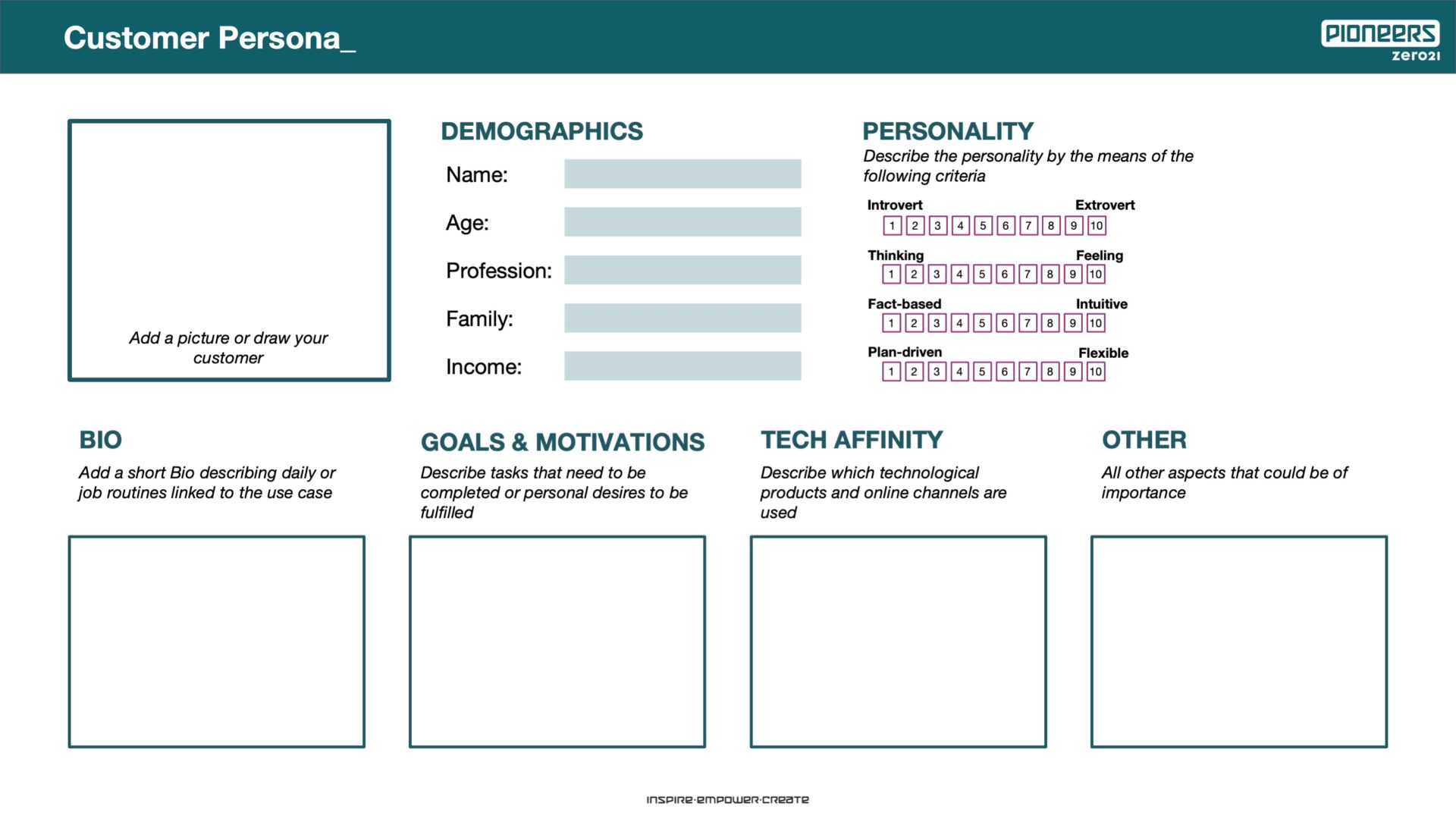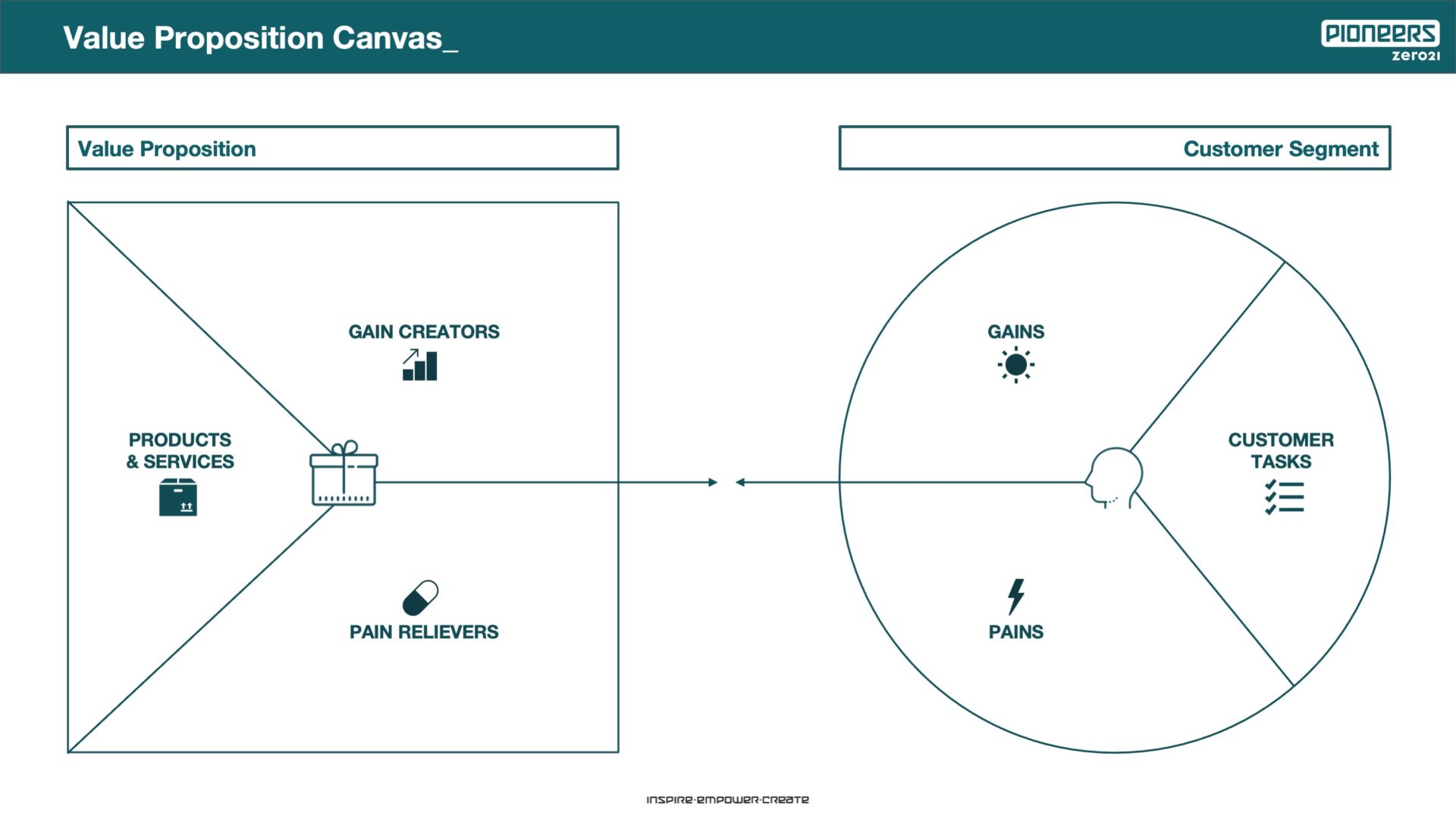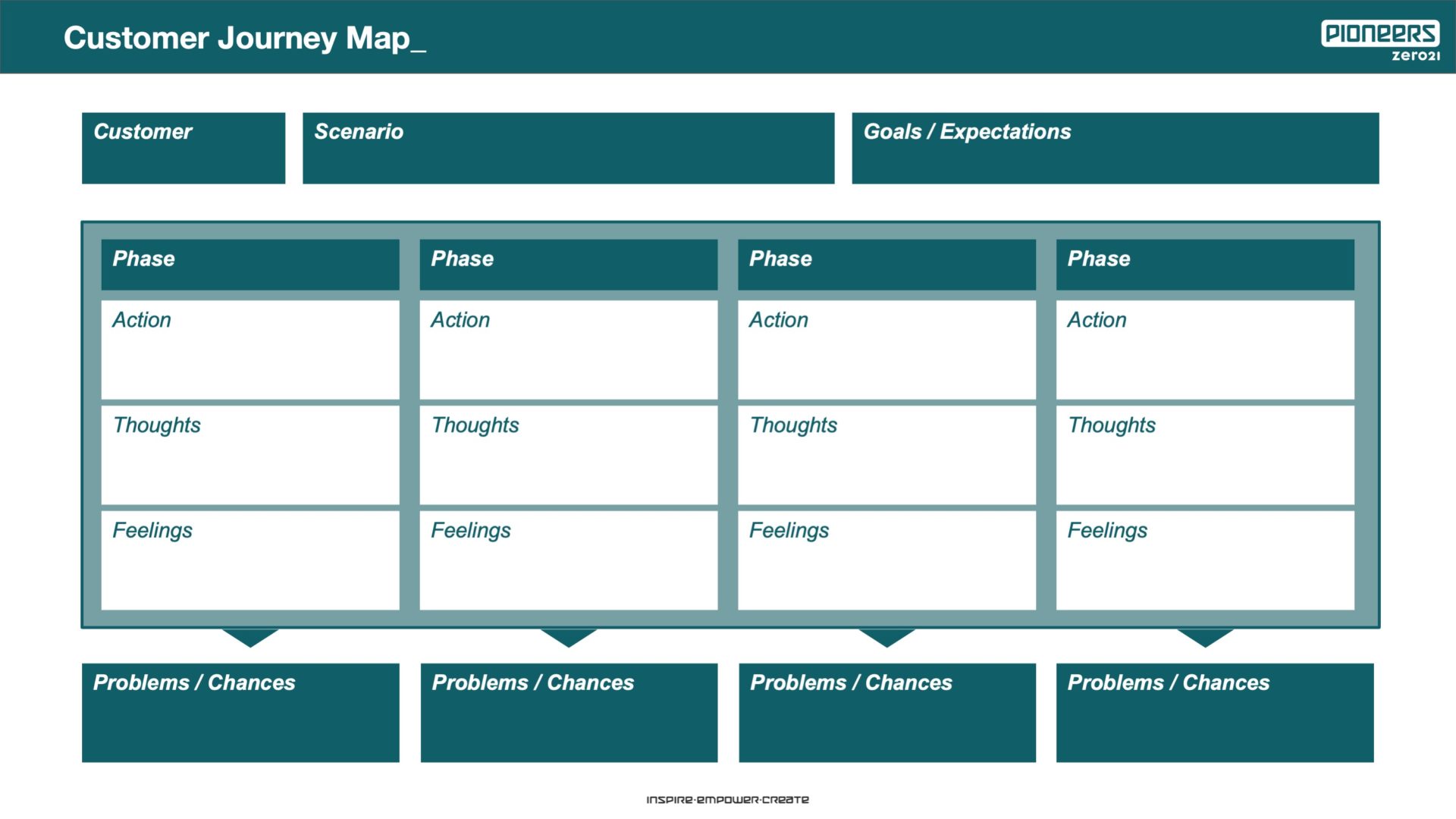
PART 1/2
For several years, Erik Muckenschnabel and I have been working in the corporate innovation space. In most of our projects, the goal is to develop new business models for existing and new external customers. Many times, however, we experience corporate teams struggling to think outside existing structures, technologies, and processes when developing new concepts.
To help our partners focus on external customers’ problems and validate the customer desirability for new solutions, we have developed an effective 5-step Customer Exploration Process. Based on existing and in-house developed methods and tools, the process can be applied to any innovation topic, business idea, or venture opportunity (You can download all 5 tools for free on the Pioneers Website HERE).
Let’s get started with step #1.
1) Make the target customer tangible
Tool
Customer Persona Canvas (by Pioneers)
What it is
The Customer Persona Canvas is a workshop tool that guides teams to describe a fictional representative of their target group and create personas.
Why you should use it
The Persona Canvas is an important starting point for any new startup or venture. It brings clarity to the team about who is the actual target customer or potential early adopter.
Describing a sample persona in detail helps teams take on the customer’s perspective and develop a solution with a clear customer in mind from the beginning. Particularly, for B2B business models, it helps to understand that “the company” is not the customer, but that customers are actual people – decision-makers and end-users.
This exercise also provides the foundation for a later definition of a customer-centric solution.
How to use it
Print the canvas (see customer persona template below) on A2 paper or use a virtual board for the teams. Provide customer persona examples beforehand, so the teams feel awkward inventing a fictional person with a name, age, family, etc.
Pro-Tip
When using a Customer Persona tool, be aware that many business models (especially two-sided marketplaces) require the definition of more than one persona. Many times your solution is targeting several customer groups at the same time. These also have different characteristics, language, background, etc. and later in the solution development also need to be considered separately.

2) Define the customer jobs and gains
Tool
Value Proposition Canvas (originally by Strategyzer)
What it is
The Value Proposition Canvas is a tool that helps teams to understand the problems and goals of their customers and how to design a value proposition and offer that solve them.
The right side of the tool guides teams in the definition of the jobs (goals/tasks), pains (problems, frustration), and gains (benefits of solving a problem) of customers. The left side, provides support to map whether a solution actually addresses the specified needs. In today’s article, we will focus only on the right side.
Why you should use it
The right side of the Value Proposition Canvas directly builds on the persona definition. It helps to clarify and prioritize the customers’ problems and needs that should be addressed by a new solution. Furthermore, it provides the basis for defining the first hypotheses about the customer that need to be tested in the next step (more coming later in part 4).
How to use it
As a first step, we focus only on the jobs-to-be-done and gains on the right side of the canvas. Here it’s about describing what the customer needs to achieve today and what benefits they get from completing these jobs/goals. We don’t just think about functional jobs (e.g. doing groceries) but also the emotional and social ones (e.g. feeling secure, building relationships).
Pro-Tip
For teams working with this tool for the first time, the difference between Jobs, Pains, and Gains is not easy to grasp. Make sure to provide a good example of a pre-filled Value Proposition Canvas of any company the team members know.
To read a more detailed description of each field in the Value Proposition Canvas, read an article by Isaac Jeffries, who has done a great job explaining the tool.

3) Dive deeper into the problems of the customer
Tool
Customer Journey Map (by Pioneers)
What it is
A customer journey map is a visual representation of a customer’s process to achieve a certain goal or job.
Why you should use it
The Customer Journey Framework helps teams to break down previously defined customer jobs into smaller steps. The teams take on a customer perspective and analyze the current solution process identifying problems and unsolved needs on the way. These can then be inserted into the Value Proposition Canvas (right side –> pains). The framework thus ensures that the pains are not based on a quick brainstorming of the team but on a deep analysis of the current customer’s situation.
How to use it
Let the team decide on the 3 most important jobs defined in the Value Proposition Canvas and then let them fill a maximum of 3 different Customer Journey Maps (paper or digital whiteboard tool). This exercise will result in a long list of pains that can be further evaluated and prioritized.
Pro-Tip
Working with different tools that are connected (Persona, Value Proposition, Journey Mapping, etc.) also requires a visual connection. If you run workshops physically, make sure that each team has a large enough wall to use all the tools side by side. Virtually, this can be easily achieved by using an endless whiteboard like Miro, Mural, or ConceptBoard.

Outlook
In Part #1 we looked at 3 tools to help analyze the customer and his/her jobs, pains and gains using three tools. In Part #2 which we’ll share soon, we will show you how to test all the assumptions made in this process in order to have a validated basis for solution development. Stay tuned!
Download the tools + examples for free at our Pioneers Website HERE.
#inspire #empower #create #pioneers #customer #validation #testing #persona #userjourney #valueproposition #digital #product #design
Do you like our customer tools and want to know more about the Pioneers corporate innovation services?
Book a short intro call with @Michael Wlaschitz who will introduce you to the Pioneers offerings.

Michael Wlaschitz
Senior Venture Designer
